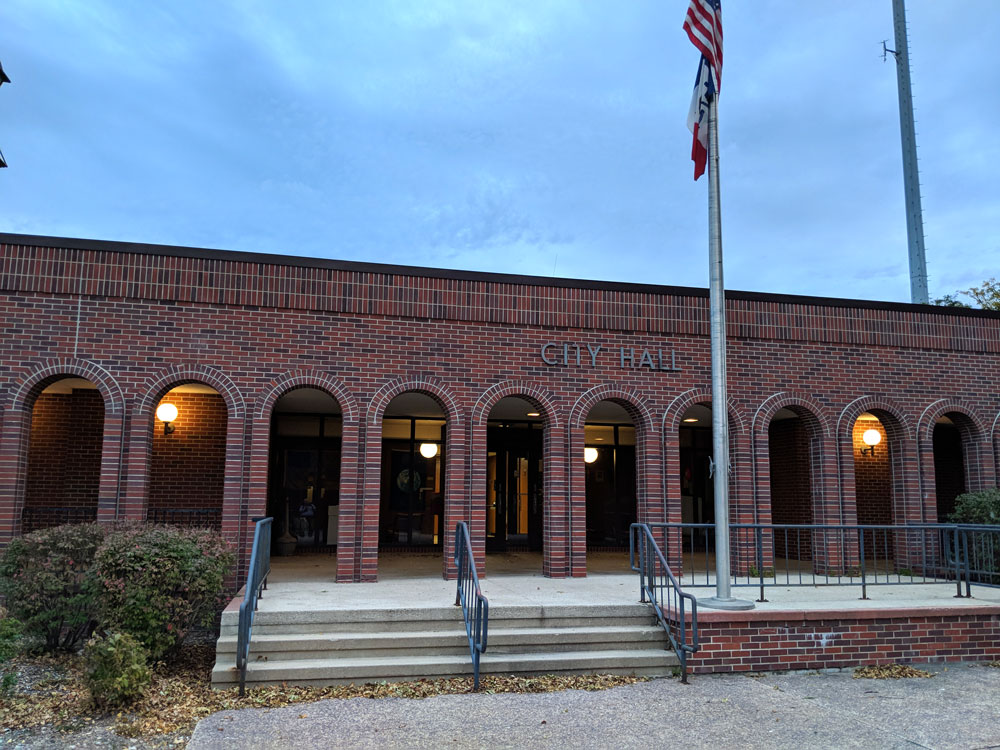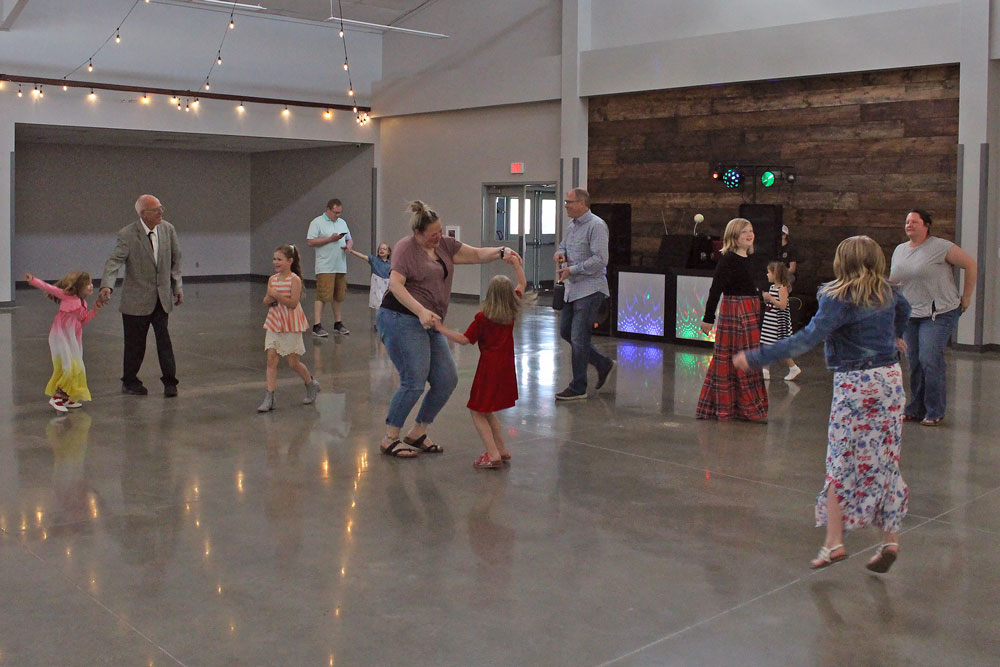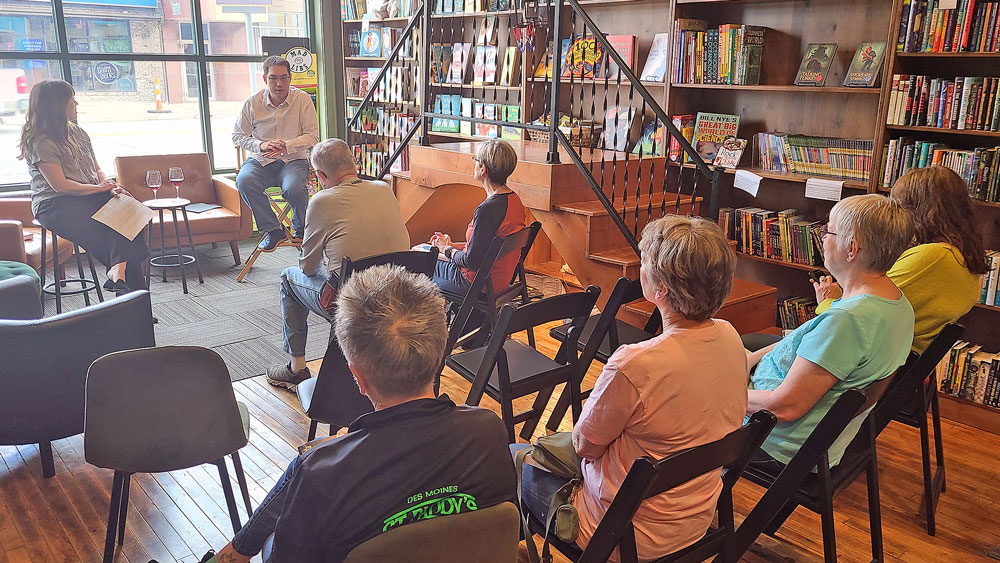Eagle Scout candidate asks for Charles City’s help with bike rack project
By Mary Pieper, Special to the Press
A Charles City Boy Scout is seeking assistance from the city for an Eagle Scout project to put more bike racks downtown.
If the City Council approves his request during its July 6 meeting, the bike racks should be in place in time for RAGBRAI.
Christopher Tull attended Wednesday’s City Council workshop session to explain his proposal to place bike racks in three areas:
• Mill Race Park by the Main Street Bridge.
• The lower City Hall parking lot next to the trail bridge and Hot Shots.
• The city parking lot adjacent to the North Iowa Area Community College Center by Hy-Vee.
“My proposal is I would pay for two of them (bike racks) and install all three of them and I would like the city to help fund the third one,” Tull said.
L&J Industries is making the bike racks, which cost $600 each.
City Administrator Steven Diers said Tull originally planned to pay for all three bike racks himself when they were still priced at $450 each. However, the price has gone up since he did his budget, so he is now asking the city to pay for one of the racks.
“I think we can probably find $600 to do that if you are so inclined,” Diers told the council.
The bike racks will be similar in design to the ones Main Street Charles City is replacing between Snap Fitness and First Citizens Bank, outside Aromas and outside the Pub on the Cedar.
Main Street was looking at several other locations where bike racks could be placed in the future, according to Diers.
“It just so happened that Chris came in with that (Eagle Scout) project, so it lends itself well to looking at bike racks in those areas,” he said.
The city owns the property at two of the three locations where the new bike racks would be placed. However, the City Improvement Association owns Mill Race Park, so the city will need to get permission from that organization to place a bike rack there, according to Diers.
He said if the City Council approves Tull’s proposal at its July 6 meeting, L&J can complete the racks by July 22. Tull and his crew plan to install the racks the next day.
“There’s lots of great Eagle projects around town and this looks like it’s going to be another good one,” said council member Keith Starr.
Diers is encouraging Tull to put a plaque on all the racks so those who use them will know how the project came about.
“That might have to come in after the fact, but that’s something that needs to happen so he gets credit for the work,” he said.
In other business, the council discussed a ruling the State Auditor’s Office has made concerning payments cities make to non-profit organizations.
The state is requiring cities to state the public purpose for those funds when approving those payments, which previously had usually been considered akin to donations.
Charles City makes payments to various non-profits each year. The 2022-23 budget the council approved in March included four of those payments:
• $2,000 for Crisis Intervention.
•$3,000 for the Charles City Arts Center.
•$3,000 for the Milwaukee Road railroad depot relocation project.
• The second of three $33,333 payments toward TLC: The Learning Center’s “Grand Plan” project to relocate to the North Grand Building.
City Clerk Trudy O’Donnell said the city needs to record the public purpose of these types of payments in the council meeting minutes.
She asked the council to act on this at its July 6 meeting. She noted city attorney Brad Sloter can help with the wording of the motion.
Council member DeLaine Freeseman said stating how the spending of these funds will benefit residents is important because “we are taking taxpayer money and putting it into other entities. We’d better be able to justify that.”
Diers said he thinks the city is already doing a good job of stating the public purpose for giving money to non-profits.
“I think what kind of drove this is there were a number of communities that would just budget a number (for non-profits) and not even talk about it and had it on a consent agenda to pay for it and it never saw the light of day. It never got talked about,” he said.
The council also discussed the latest hazard mitigation plan for Floyd County.
The Federal Emergency Management Agency requires local governments to have these plans in place for them to be eligible for hazard mitigation funding for damages from disasters such as tornados, blizzards and floods, said Drew Mitchell, the county’s emergency management coordinator.
The hazard mitigation document is a planning tool used to minimize the impact disasters have on communities and residents. The plan identifies, assesses and prioritizes risks and addresses how they would be handled.
The Floyd County Board of Supervisors has already approved the 2022 plan. Cities and school districts in the county are now being asked for their approval.
The last county-wide hazard mitigation plan was approved in 2015. Mitchell said there aren’t many changes in the new plan.







Social Share